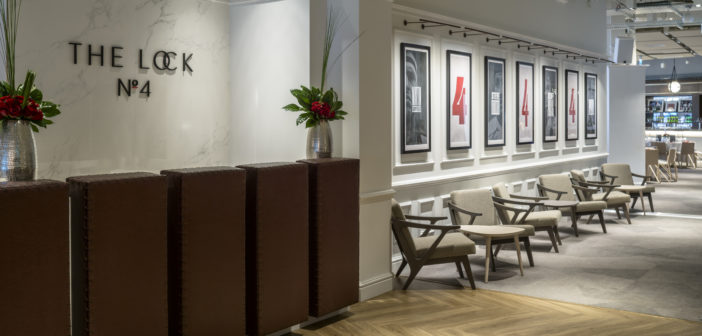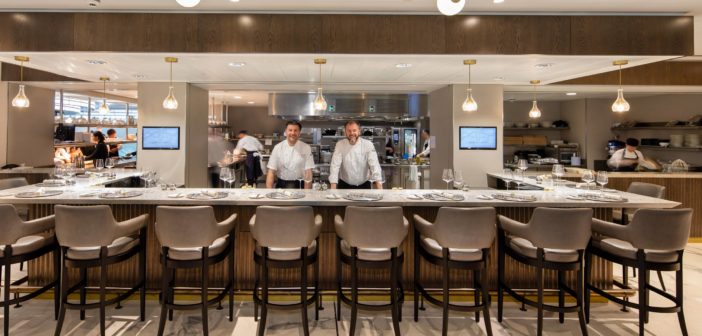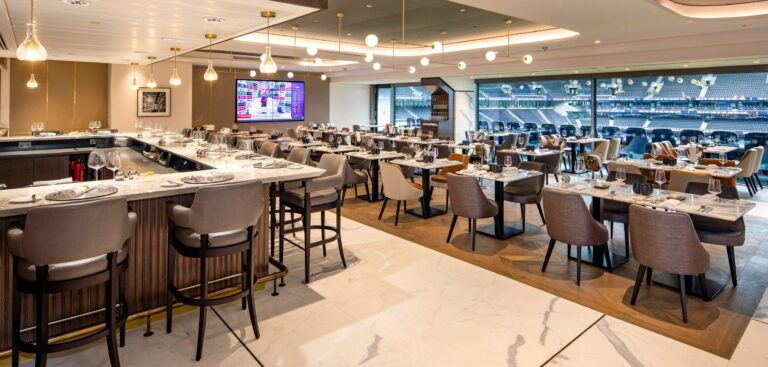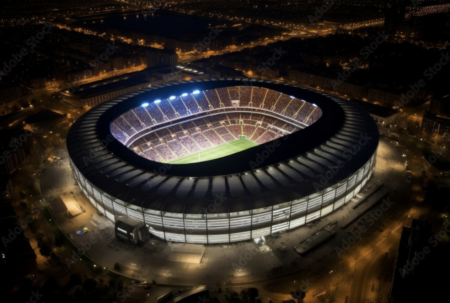Over the past year, there has been a number of emerging trends in stadia hospitality design, changing the way fans experience a day supporting their side. Here are some of the themes kicking off the next decade of sports hospitality design.
Like so many other sectors, sports hospitality has had to undergo substantial transformation to keep up with digitization and technology. With better streaming options available than ever from the comfort of viewers’ homes or their favorite local pub, the thrill of the game isn’t necessarily enough to maintain strong footfall.
Morgan Furniture, which has worked with venues such as Twickenham Stadium and Tottenham Hotspur stadium has revealed what it believes will be the big trends working their way into VIP areas.
Team spirit
Stadia cater to numerous teams throughout the year, so it’s important not to alienate visiting ones with interiors completely decked out in one or two club colors. We’re seeing a strong appetite instead for neutral palettes which can be complemented with club or team branding. With sustainability high on the agenda, timber detailing, in furniture, flooring and other details, is also enduringly popular.
More broadly, designers and sports venues are embracing British heritage with a desire for homegrown manufactured goods and a distinctly ‘British feel’. Along with helping support local economies, this move reduces the carbon footprint associated with importing goods from abroad, further supporting a green approach.

Luxury
A great seat is no longer enough; sports fans are looking for high-end luxury. Before and after games and between halves or periods, attendees seeking refreshments and a place to socialize want comfort and style. This can be created in a number of ways, from décor and layout to carefully chosen furniture.
Well designed, high-quality seating can make or break the experience as visitors find respite from crowded stands, or even opt to watch the game from the bar or restaurant. It’s no longer strictly about watching the game from a ticketed seat.
In particular, designers we’ve recently worked with on Twickenham’s The Lock and Tottenham’s H Club have been drawn to dining and lounge chairs with a timeless and contemporary elegance that complement their surrounding aesthetics.
We’ve seen a similar trend in other areas of hospitality we work in, such as hotels and cruise ships. As aesthetics across these areas increasingly overlap, specialists in stadium design have had to extend and advance their own approach from the traditional offer.

Experience
Going to a game comprises not only a significant cost, but also a considerable time commitment. Stadium managers have started to recognize an opportunity in this for creating full day experiences, inviting sports lovers to spend a day out socializing with fellow friends, family and fans.
Rather than being open strictly for big sporting events, many large venues are opening up as places to visit and are looking to attract interest from corporate and private events. This follows on from other major European clubs, such as Barcelona FC.
Twickenham Stadium, for example, offers 34 spaces and rooms dedicated to business conferences, private dinners and social receptions. Its new east wing now features four floors of hospitality, each with a different look and feel.
A crucial part of hosting a wide range of events is being able to easily and quickly rearrange spaces into different configurations. To accommodate this as well as provide as many seats as possible, designers are looking for chairs with a small footprint. However, this doesn’t have to be at the expense of comfort. Seating can still be generous without taking up a lot of space.
And beyond
As the decade kicks off, there a number of emerging technologies which will almost certainly be game-changers in sports hospitality design. From augmented and virtual reality to big data and the Internet of Things, their influence is yet to be fully realized, including their impact on the hospitality sector.
To stay relevant and keep fans in seats, it’s crucial that venue managers and stadium designers don’t just watch these developments from the sidelines.





